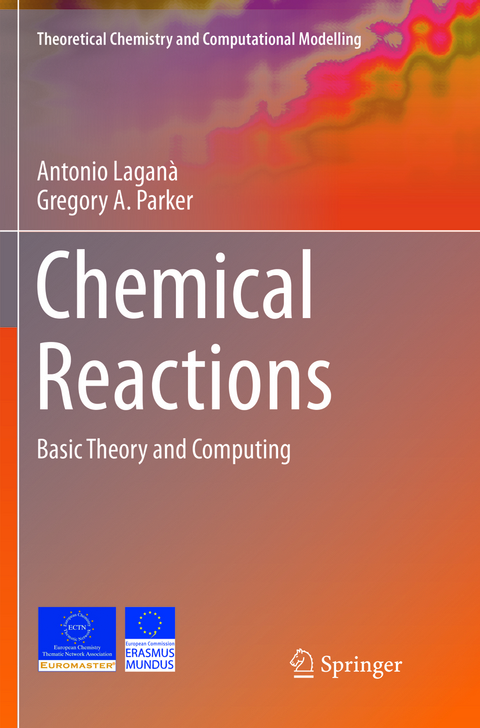
Chemical Reactions
Springer International Publishing (Verlag)
978-3-319-87299-5 (ISBN)
Methods for computing quantum, classical, and semi-classical reactive probabilities based on the already discussed concepts and tools are also featured and the resulting main typical reactive behaviors are analyzed. Finally, the possibility of composing the computational tools and technologies needed to tackle more complex simulations as well as the various competences and distributed computing infrastructure needed for developing synergistic approaches to innovation are presented.
Antonio Laganà is Professor of Inorganic Chemistry at the University of Perugia. After his (Theoretical and Computational) Chemistry degree he has been postdoc at the University of Manchester (1977-78) and Visiting Researcher at several Laboratories and Universities (ECSEC, Caltech, Cambridge, Los Alamos, Salamanca, Bristol, CERN, EPCC, Vitoria, FORTH, Barcelona, CNUCE). He has been Director of two NATO workshops and has organized several International Schools and Conferences (among which Molec, Molecular Beams, Gas Kinetics, Stereodynamics, Computational Chemistry, Parallel computing, International Conference on Computational Science and its Applications) His research work has developed in the fields of electronic structure, molecular scattering, dynamics and kinetics, parallel and distributed scientific algorithms, high performance and high throughput computations with particular emphasis to distributed research and education community environments and tools. He has published more than 400 papers and authored 10 books. Prof. Laganà chairs the Computational Chemistry Division of EUCHEMS, the Virtual Research Community CMMST (Chemistry, Molecular & Materials Sciences and Technologies) of EGI.eu and the Virtual Education Community Standing Committee of ECTN. He has chaired in the past the ECTN Association (2007-2009), the COST Chemistry technical committee (2003-07), the Chemistry Department of the Perugia University (2002-13), the Computer Centre of the University of Perugia (1996-2001) and the Italian Interdivisional group of Computational Chemistry. Prof. Greg Parker is the George Lynn Cross Research Professor at the Homer L. Dodge Department of Physics and Astronomy in the university of Oklahoma. He obtained his B.S and PhD from Brigham Young University, USA. Prof. Parker is the recipient of the following awards: the George Lynn Cross Research Professorship and the Regents' Award for Superior Research & Creative Activity.
From the phenomenology of chemical reactions to the study of two body collisions.- A quantum approach to the two body problem.- Ab initio electronic structure for few body systems.- The treatment of few body reactions.- Complex reactive applications: a forward look to Open Science.- Appendices.
| Erscheinungsdatum | 12.02.2019 |
|---|---|
| Reihe/Serie | Theoretical Chemistry and Computational Modelling |
| Zusatzinfo | XVI, 208 p. 61 illus., 43 illus. in color. |
| Verlagsort | Cham |
| Sprache | englisch |
| Maße | 155 x 235 mm |
| Gewicht | 428 g |
| Themenwelt | Naturwissenschaften ► Chemie ► Anorganische Chemie |
| Naturwissenschaften ► Chemie ► Physikalische Chemie | |
| Schlagworte | European Chemistry Thematic Network Association • European Education, Audiovisual and Culture Agency • introduction to molecular modelling • modelling chemical reactions • modelling kinetics • modelling reaction dynamics • Molecular modelling of reactions • Potential energy surface reactions • quantum computing chemical reactions • semi-classical reactive probabality • Theoretical Chemistry and Computational Modelling |
| ISBN-10 | 3-319-87299-0 / 3319872990 |
| ISBN-13 | 978-3-319-87299-5 / 9783319872995 |
| Zustand | Neuware |
| Informationen gemäß Produktsicherheitsverordnung (GPSR) | |
| Haben Sie eine Frage zum Produkt? |
aus dem Bereich


